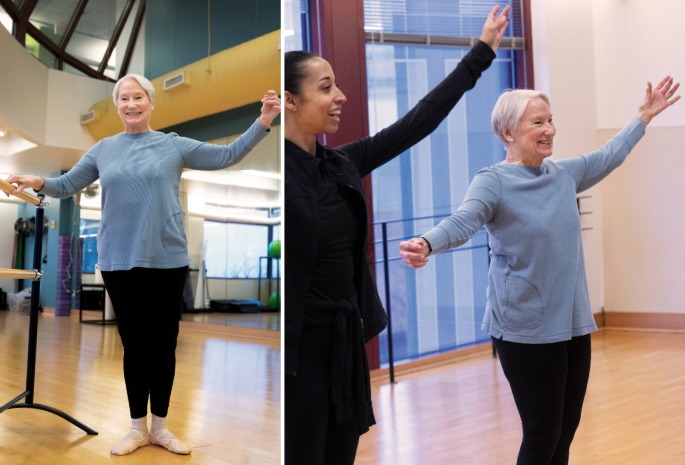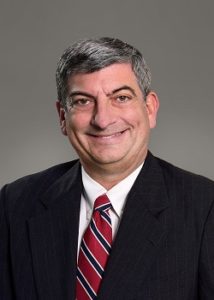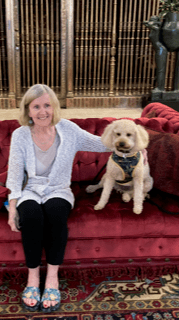A Spine Surgery Success Story: Finding Relief from Back Pain
“I volunteer at a children’s hospital and through my church,” the 81-year-old shares. “I haven’t been able to do that in quite some time, and I miss it.”
Pat was already familiar with Emory Orthopaedics & Spine Center. She had seen Randy Katz, DO, for knee pain. So, she made an appointment with him as her back pain worsened. Together, they planned to try a non-surgical approach to help relieve her pain with epidural steroid injections.
“Those injections worked for a few weeks, but the horrible pain would return,” says Pat. “I initially did not want to have back surgery because of the stigma around it. But I realized it was probably the best way to feel better.”
Leading orthopaedic and sports medicine treatments
Learn about Emory Orthopaedics & Spine care. Make an appointment online, find a provider or call 404-778-3350 to schedule an appointment.
Moving Forward with Spine Surgery
“We offer a full spectrum of diagnosis and treatment for spine issues,” explains Dr. Boden. “Fortunately, about 90% of the patients we see have success with non-operative treatment. The patients that are well-suited for surgery tend to respond well.”
Patients who are good candidates for spine surgery typically have a pinched nerve that causes radiating pain down the arms or legs. A herniated disc or spinal stenosis (narrowing of the spinal canal) are the most common causes of a pinched nerve.
Pat met this criterion. The age-related changes to her spine also were creating instability. This allowed the vertebra to slip forward, which narrowed her spinal canal, a condition called spinal stenosis. Both these conditions – the forward slippage and spinal stenosis – put pressure on the nerves in her back, causing significant radiating leg pain.
“I was hesitant to have the surgery before meeting with Dr. Boden,” Pat admits. “After trying the epidurals, I knew I had to do something. I couldn’t go on. The pain was terrible.”
Dr. Boden’s surgical plan for Pat included two procedures – a laminectomy and spinal fusion. The laminectomy created room in her spinal canal by removing the back of her affected vertebrae and trimming bone spurs that had formed over the years. This helped relieve the nerve pinching.
The second part of the surgery, a spinal fusion, created stability in her spine by fusing two vertebrae together. This prevents the spine from slipping forward again. It can take six to nine months for those bones to fully heal and grow together as one.
“I feel so blessed. Every morning I get up and I feel so blessed that I can walk without pain,” Pat shares.
Dedicated to Recovery
Leading orthopaedic and sports medicine treatments
About Emory Orthopaedics & Spine Center
Emory Orthopaedics & Spine offers comprehensive orthopedic and spine care at multiple locations across the Atlanta metro area, and our orthopedic and spine programs are ranked among the top in the nation. Our highly trained orthopaedic and spine specialists work together to diagnose and treat a wide variety of orthopaedic, spine, and sports medicine conditions.
Our physicians use innovative approaches to care – many of them pioneered right here at Emory – to ease your pain and get you back to an active lifestyle.
Emory University Orthopaedics & Spine also has among the highest patient satisfaction and best outcome rates in the nation* for your surgery. By using advanced research techniques developed by our top surgeons, we can make sure your surgery is done right the first time.
*Results based on an average of 86% patient satisfaction rating compared to a national benchmark of similar facilities at 68%. Infection rates averages at .45% for primary hip and knee procedures compared to .58% nationally.
Related Posts
-
 Robotic-assisted knee replacement surgery at Emory Healthcare helps patients like Laura, 77, stay on the move with less pain and faster healing.
Robotic-assisted knee replacement surgery at Emory Healthcare helps patients like Laura, 77, stay on the move with less pain and faster healing. -
 When pain meds could no longer control her chronic back pain and sciatica, Nancy sought spine care at Emory Healthcare to regain her active lifestyle.
When pain meds could no longer control her chronic back pain and sciatica, Nancy sought spine care at Emory Healthcare to regain her active lifestyle. -
 After a broken ankle, Connie faced intense pain from ankle arthritis. But with Emory Healthcare’s advanced ankle replacement techniques, Connie found relief.
After a broken ankle, Connie faced intense pain from ankle arthritis. But with Emory Healthcare’s advanced ankle replacement techniques, Connie found relief.
Recent Posts
-
Dec 11, 2025
-
Dec 8, 2025
-
Dec 3, 2025
-
Nov 17, 2025
-
Nov 14, 2025
-
Nov 10, 2025



